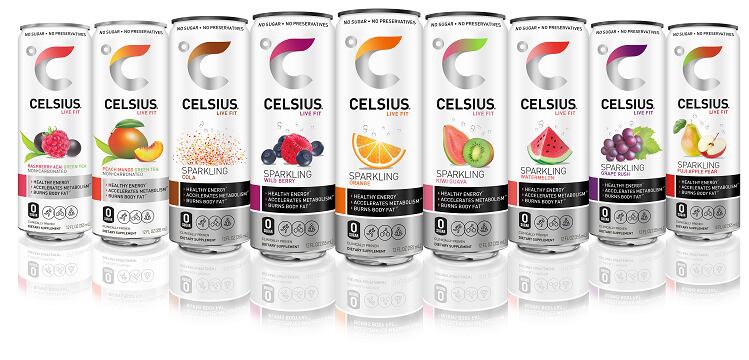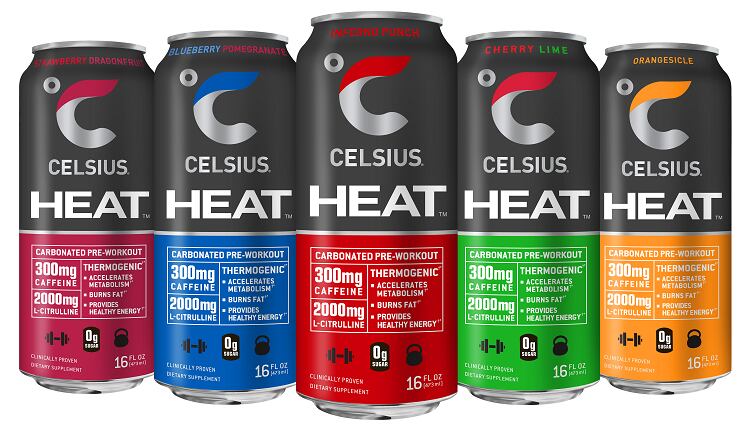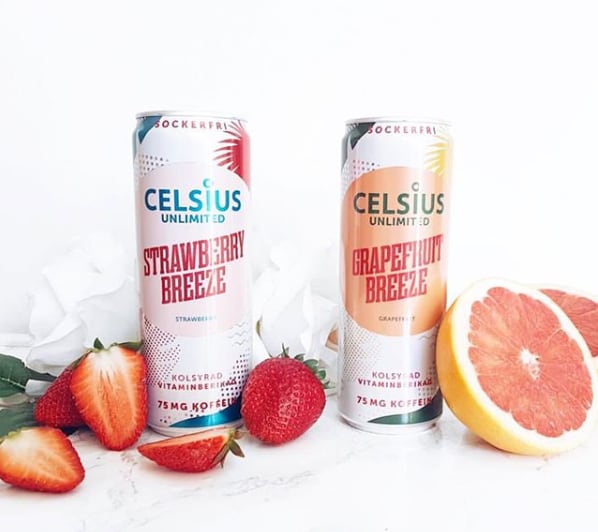
Dietary supplement industry veteran Greg Horn, former CEO of both GNC and Garden of Life at different points in his career, was one of the developers of thermogenic (or “calorie-burning”) drink Celsius back in 2004, which went to market in 2009.
The original formula for its core product is still the same formula used today. It includes guarana, ECGC from green tea, ginger, and over seven essential vitamins. Back then, the brand highlighted clinical studies that have linked the ingredient combination to weight loss, targeting the diet community.
Around this same time, Nestle and Coca-Cola entered a joint venture to create a beverage called Enviga, marketed in a similar fashion to Celsius as a “fat burner.” Because of Enviga’s multinational giant backers, it received a lot of scrutiny from consumer groups like the Center for Science in the Public Interest, which filed a lawsuit over the company’s claims, arguing that the science to support Enviga’s structure/function claims were dubious.
This, too, hurt Celsius, which was targeted in a class action lawsuit in California over its claims. “We prevailed,” current Celsius CEO John Fieldly told us.
He joined Celsius as interim chief financial officer in 2012 to help new management turnaround the company after a disastrous start in the 2010s. Previously working in the drug retail channel, he was well acquainted with the nutraceutical and OTC space from both a brand as well as retailing perspective.
“[The previous management] launched an IPO in 2010, raising roughly around $15 million, got the product in over 20,000 retailers in the US, did a shotgun approach and unfortunately ran out of funds within the first 12 months and got delisted,” Fieldly said.
“The company was in a dire state and on the verge of bankruptcy when I started.”
Fitness focus helped Celsius climb to top
Celsius is back on NASDAQ and is enjoying year-over-year growth in both revenue and distribution. Fieldly attributed this to a shift in messaging, focusing more on energy and fitness and less on fat burning (though ‘burns fat’ is still listed on its packaging).
“A lot of companies make their structure function claims based on a single ingredient, not on a finished product. All Celsius science is based actually on finished products,” Fieldly said. This means that clinical trials assess the effects of drinking Celsius, instead of assessing the effects of the ingredients used to make Celsius. To date, most human clinical studies on Celsius is published in the Journal of the International Society of Sports Nutrition.
The scientific support is there, it was just a matter of which data to highlight when Celsius communicates with consumers.


“Through our journey as the brand continues to grow, we continue to evolve and really understand who the consumer base is for Celsius,” he said. “It’s really the health and wellness set.”
Instead of highlighting the calorie burn, Celsius wants consumers to see the drink as an energy drink that will help them “push harder and work harder. It could be at the gym, it could be at the grocery store. It could be getting your projects done for work or preparing for that meeting.”
The change paid off. “We have been growing at a very high growth rate, right around the close of the year at $52.6 million, a 40% growth rate in 2018, just in North America alone we’re seeing growth rates in the high 60s,” Fieldly said.
“We’re at a really great trajectory, and we’re excited for 2019.”
Global appeal

Celsius has also been enjoying a global reach. Back in 2009, two Swedish entrepreneurs vacationing in Florida came across Celsius and decided to bring it home. With different packaging from the US version, Celsius is one of the top selling energy drinks in the Nordic countries, Fieldly said.
“They had the same trajectory we had here in the US—it stated at gyms, fitness stores, specialty stores, and you’re slowly seeing it in traditional retail,” he said.
Traditional retail channels are still relatively new for Celsius. It struck gold when it secured a deal with 7-Eleven. “7-Eleven partnered with us because they wanted an innovative offering in the energy set. They saw the trend that health and wellness and functional energy were at the forefront, and really the next evolution of energy,” he added.
Partnering with a giant c-store company helped sprinkle some stardust on Celsius. Around this time, it won the attention of Horizon Ventures, the investment arm of Li Ka-Shing, a Hong Kong-based tycoon.
“Li Ka-shing sees Celsius as very disruptive to the beverage category, offering a beverage that burns calories and body fat and tastes great,” Fieldly said.
With a new national distributor for mainland China and more and more accounts around the world, Celsius is on a quest for global dominance in the energy drink space.
To Fieldly, this is all thanks to Celsius’ fitness messaging, which targets everyone, not just individuals trying to lose weight.
“Not only does it have broad appeal in North America, it has global appeal.”

